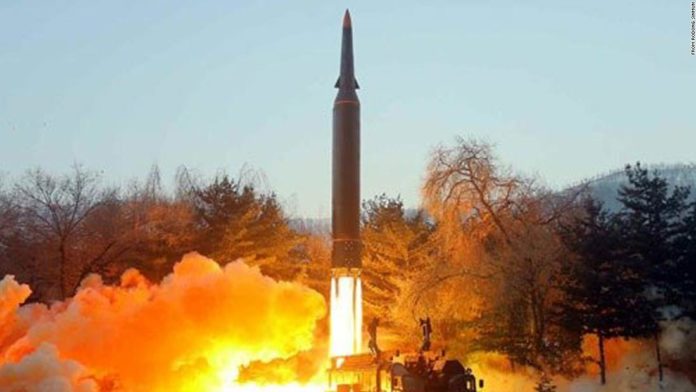US Indo-Pacific Command said it is stepping up its intelligence and surveillance activities in the Yellow Sea, between China and the Korean Peninsula, “in light” of the recent launches by North Korea that “violate multiple UN Security Council resolutions and pose a threat to the DPRK’s neighbors and the international community.”
“In light of this, on March 7, 2022, U.S. Indo-Pacific Command ordered intensified Intelligence, Surveillance, and Reconnaissance collection activities in the Yellow Sea, as well as enhanced readiness among our ballistic missile defense forces in the region. Our commitment to the defense of the Republic of Korea and Japan remains ironclad,” the statement read.
The Biden administration has publicly condemned the tests, calling them a “needless provocation,” but has not made any public changes to force readiness or posture in the region until now. The US has acknowledged that the tests have occurred in past instances, but, as recently as February, the US said the tests were not a threat.
Publicly adjusting US INDOPACOM’s readiness and increasing collection of intelligence and surveillance in the region is a signal from the Biden administration that it needs to strengthen its military posture to ensure the US and allies in the region like South Korea and Japan are protected against North Korea’s missile tests.
A senior US defense official called recent missile tests by North Korea “provocative,” stating the additional steps were taken to ensure US “readiness meets the requirements” of protecting US interests and allies.
“The North has been conducted as you all have documented now a series of additional launches and tests, provocative launches and tests, and we are, we believe we are duty bound to make sure that our readiness meets the requirements,” the official told reporters on Wednesday.
North Korea launched a single ballistic missile on March 5 that flew about 270 kilometers, or approximately 170 miles, and reached an altitude of 560 kilometers, or approximately 350 miles, according to South Korea’s Joint Chiefs of Staff.
“While we have assessed that this event does not pose an immediate threat to U.S. personnel, territory, or that of our allies, we will continue to monitor the situation. The U.S. commitment to the defense of the ROK and Japan, remains ironclad,” a statement from US INDOPACOM said in response to a test in February.
Source : Nbcnewyork












